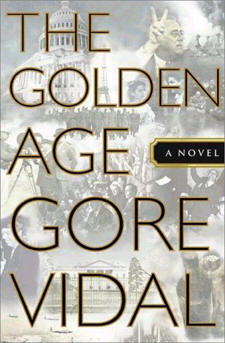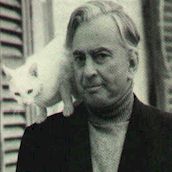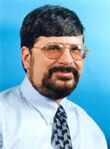 |


|
|
by Gore Vidal The Golden Age: A Novel by Gore Vidal; Doubleday; 467 pages; $27.50.  In 1967 Gore Vidal wrote Washington, D.C., a novel set in the nation's
capital between 1939 and 1954. Among other things, Washington D.C.
introduced us to newspaper magnate Blaise Delacroix Sanford, his son Peter,
Senator James Burden Day and Clay Overbury, an ambitious "Kennedyesque"
politician.
In 1967 Gore Vidal wrote Washington, D.C., a novel set in the nation's
capital between 1939 and 1954. Among other things, Washington D.C.
introduced us to newspaper magnate Blaise Delacroix Sanford, his son Peter,
Senator James Burden Day and Clay Overbury, an ambitious "Kennedyesque"
politician.
Vidal did not know what he started until after he wrote Burr (1973) and 1876 (1976). Those books' acclaim moved Vidal to put them together, add a few volumes, and create a series. The result was Vidal's "American Chronicle" Series, which Gabriel Garcia Marquez called a "magnificent series of historical novels or novelized histories." All together the "American Chronicles"--Burr, Lincoln, 1876, Empire, Hollywood, and Washington, D.C.--tell the story of an American family from the days of Aaron Burr to the days of Harry S. Truman. The Golden Age: A Novel is the final volume of Vidal's "American Chronicles". Also set between 1939 and 1954, it complements but does not supplant Washington, D.C. Though the two books share many characters and events, The Golden Age benefits from the perspective of 30 years and 5 previous novels. Both novels deal with America's "Golden Age", the glorious period of Vidal's youth when the USA became a world power. Both novels end in 1954--not counting an "end of the millennium" epilogue in The Golden Age --by which time our country has gone from a republic to an empire, and from a peace-loving nation to a "national security" state.
Needless to say, the man who stirred the pot by writing that Lincoln had syphilis and (pre-DNA) that Jefferson had a slave mistress is not afraid to point out his contemporaries' less-than perfect records. For example, here we learn that FDR knew that the Japanese were going to bomb Pearl Harbor, and might have provoked the attack to end isolationism and get the U.S. in the War. Even worse, Truman dropped the atomic bomb on Hiroshima in order to send a message to the Soviets and used the resulting Cold War to stifle dissent and create a garrison state. Nor is Vidal averse to changing the life of his "real characters" if they help his story. For example, Caroline has an affair with Harry Hopkins at a time when Hopkins can barely stay alive. Among the "real characters" in Gore Vidal's The Golden Age is Gore Vidal. Let Vidal introduce us to "himself": "Cornelia Claiborne had taken up with several young academics who believed that the country urgently needed yet another academic quarterly review. . . . Then she introduced him to a lean young man with a blond crewcut like Clay's, not a recommendation in Peter's current mood. But then Peter realized that they knew each other from Washington. Gene Vidal was several years younger than Peter. Each had been at St. Alban's; each had attended Mrs. Shippen's; then war had taken Vidal to the Pacific and Peter to the far more perilous corridors of the Pentagon. Now, to Peter's bemusement, Vidal had dropped his Christian name and as Gore Vidal had published a first novel; a second novel was on the way. Although Peter would have preferred death to reading a book by a Washington contemporary even younger than himself, he had not realized that the book he had read about--some kind of war novel--was by the boy that he had known prewar." Gore and Peter will meet again in the epilogue, at the new millennium and in a country that, sadly, is very much like ours. If book critics are frustrated writers (which of course is not true), then political writers are frustrated politicians. This could apply to Vidal, who ran for Congress in 1960 and the Senate in 1982, both unsuccessfully. But politics' loss is literature's gain, and Vidal's electoral defeats allowed him to exercise his true genius as a novelist, dramatist and essayist. Having said that, I regret to add that The Golden Age is a disappointment. It lacks the epochal sweep of the series's earlier books, and even the truly great figures that inhabit these pages--Franklin and Eleanor Roosevelt, for example – do not hold our attention the way that Vidal's Burr, Lincoln or Teddy Roosevelt did. Vidal just plods along, and goes through the motions as if he was just fulfilling a contractual obligation; here's World War Two, there's the Cold War--so what? Even so, The Golden Age has some memorable passages. Here is Caroline Sanford's impression of America's Grand Master of Politics. (Bush and Gore, are you listening?)
'Good evening, Mr. President.' She even felt for an instant that she should curtsy in the awesome presence of Franklin Delano Roosevelt, a figure who towered even when seated in his wheelchair. It was the head and neck that did the trick, she decided, with a professional actor's eye. The neck was especially thick while the famous head seemed half again larger than the average, its thinning gray hair combed severely back from a high rounded forehead. . . ." There's minimal gay content in The Golden Age; Tennessee Williams makes an appearance, as do several arty friends of Peter Sanford. But Blaise Sanford's unrequited love for Senator Burden Day, a major theme in Washington, D.C., is barely mentioned in The Golden Age. Still, anything by Vidal--a self-proclaimed "bisexualist"--belongs in any literate queer's library. The Golden Age makes passing reference to The City and the Pillar, Vidal's 1948 novel which is rightly considered a milestone of American gay fiction. Though The Golden Age is the last of the "American Chronicles", I hope this is not the last of Gore Vidal. We hope that Vidal has time to write about the current electoral mess--Al Gore is a distant cousin--and the State of our Union as it stumbles into a new millennium. As for The Golden Age, it should be read as the final, though flawed, volume of an important and fascinating series. Even Vidal as his worst--which The Golden Age is not--is better than most of what passes as "literature" today.
|
 © 1997-2000 BEI
© 1997-2000 BEI
 Gore Vidal
Gore Vidal  Jesse Monteagudo, Florida's foremost GLBT scholar, is featured in
James T. Sears' forthcoming history of the gay South:
Rebels, Rubyfruit and Rhinestones to be published in May
by Rutger's University Press.
Jesse Monteagudo, Florida's foremost GLBT scholar, is featured in
James T. Sears' forthcoming history of the gay South:
Rebels, Rubyfruit and Rhinestones to be published in May
by Rutger's University Press.